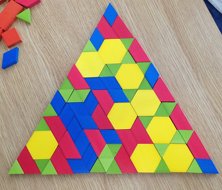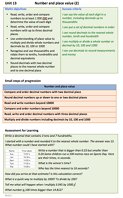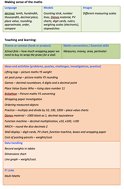However they wanted to make the maths more engaging for the children. When we went through the process and analysed what they needed, it was invariably remedied by making better use of all the key elements of the planning template.
The purpose of the unit template is to have a 2-week, medium term plan to work from to inform each lesson. The basics are there already on the template – the maths objectives, success criteria, small steps of progression and AfL questions. These are the first things to look at to get a feel of the unit and to gauge whether it is pitched correctly for your class. If not, go back a few progression steps to ensure they have the chance of mastery or, if necessary, go back to a previous unit. The assessment for learning questions are particularly useful for monitoring the day-to-day progress of the class.
It is the other sections of the template that give you the opportunity to put your own stamp on the planning and the experiences your class will have. It is even better if you can work with a colleague when using the template – 30 minutes of joint planning is likely to be enjoyable, creative and a time-saver for your daily planning.
Let’s look at each section:
The Making sense of the maths section is exactly that – children make sense of the abstract nature of maths themselves if they actively make connections between the language used, any action on models they make and on the images they explore. This is how the maths is represented to them, so it needs to be carefully planned for.
Make a note of the specific vocabulary that will be used in a unit - it is a good idea to highlight any new words. Once written here they can be copied on to a ‘word wall’ and on to a set of flash cards for the class to use.
Models
A fundamental part of the planning – select the most appropriate structured apparatus or resources to help model the mathematics you are teaching. Some units, such as place value, will have a number of different models (base-10 apparatus, arrow cards, abaci…)
Images
Children use pictures and representations to help gain a mental image of the maths, which supports them in understanding the maths. Gather useful pictures and images such as number lines and 100 squares to match the focus of the unit.
Theme or context
Try to decide on a context or theme for the unit – not for every lesson, but as a thread that can help ‘hang the maths on’. This may not spring to mind quickly, but could be related to some activities you find or a topic that is current for your class. It may help to think of a hook such as a story to start it off or a product– an outcome to work towards during the unit, which involves problem-solving and reasoning.
Maths connections/essential skills
Maths is full of connections so consider the other maths strands that could be consolidated or linked to the unit, helping the children see the connections between the strands. Essential skills such as number bonds and multiplication facts are another aspect to make a note of so you know that you need to include this within your teaching.
Ideas and activities (problems, puzzles, challenges, investigations, practice)
This is where you get creative – collect ideas, think through possible games and activities, search through websites and look through books. Working in pairs or small groups, you can make lists or produce mind-mapping charts – whatever you prefer. You are unlikely to use all the ideas but it gives you a good collection to select from and helps determine the possible context.
Data handling
I think that data handling is perfect for including in every unit of work – it provides different formats for children to interpret and explore number, shape, calculations and measures and it can give a context that drives the unit. Decide on the types of graphs, charts or tables and teach the skills for interpreting the data. To make sure you are covering all the aspects of the data handling process, use the statistics planning record sheet.
IT Links
There are many computer programs and applications that can enhance the learning experience and support your teaching, so make sure you consider the effectiveness of them and if they will add anything to your lessons.
Teaching maths in context - using a load of potatoes
Teaching maths around a theme makes the maths purposeful and inspiring.
Is this your first time planning with Broadbent Maths?
Here are a few hints and tips to help you get to grips with this approach.
Integrating statistics inot every pprimary maths topic
Planning for the use of tables, charts and graphs within every unit helps children make connections.
Planning maths to include problem solving
Match problem solving activities to the maths objective and then adapt it for different themes.
Broadbent Maths Menu Users
Take a look at How to plan a unit.
Once you have the Unit Planning template completed you can use it to help write your daily plans, adapting it as the weeks unfold. There are two sample daily planning formats or you can use your own school format.





